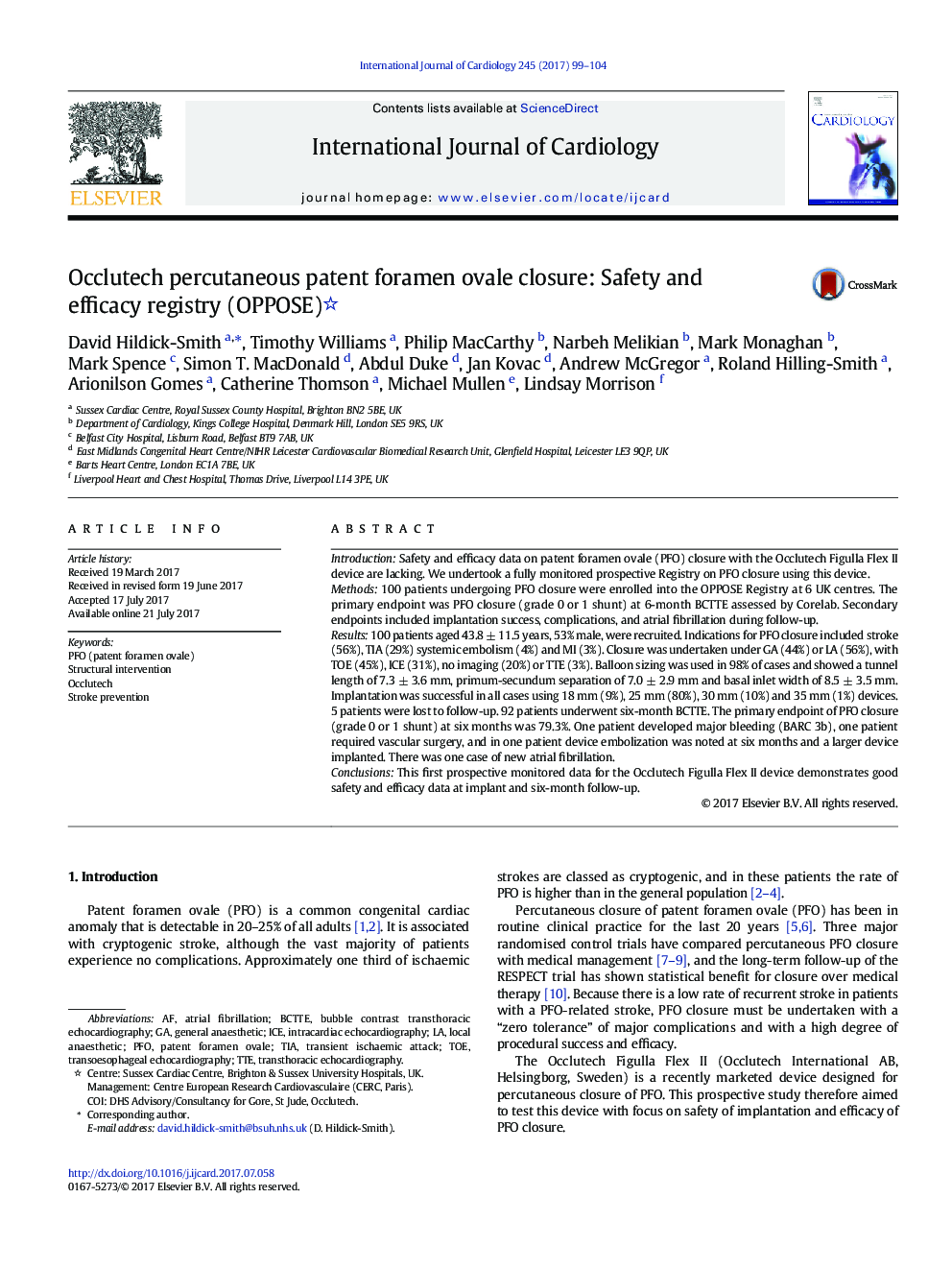| Article ID | Journal | Published Year | Pages | File Type |
|---|---|---|---|---|
| 5604582 | International Journal of Cardiology | 2017 | 6 Pages |
IntroductionSafety and efficacy data on patent foramen ovale (PFO) closure with the Occlutech Figulla Flex II device are lacking. We undertook a fully monitored prospective Registry on PFO closure using this device.Methods100 patients undergoing PFO closure were enrolled into the OPPOSE Registry at 6 UK centres. The primary endpoint was PFO closure (grade 0 or 1 shunt) at 6-month BCTTE assessed by Corelab. Secondary endpoints included implantation success, complications, and atrial fibrillation during follow-up.Results100 patients aged 43.8 ± 11.5 years, 53% male, were recruited. Indications for PFO closure included stroke (56%), TIA (29%) systemic embolism (4%) and MI (3%). Closure was undertaken under GA (44%) or LA (56%), with TOE (45%), ICE (31%), no imaging (20%) or TTE (3%). Balloon sizing was used in 98% of cases and showed a tunnel length of 7.3 ± 3.6 mm, primum-secundum separation of 7.0 ± 2.9 mm and basal inlet width of 8.5 ± 3.5 mm. Implantation was successful in all cases using 18 mm (9%), 25 mm (80%), 30 mm (10%) and 35 mm (1%) devices. 5 patients were lost to follow-up. 92 patients underwent six-month BCTTE. The primary endpoint of PFO closure (grade 0 or 1 shunt) at six months was 79.3%. One patient developed major bleeding (BARC 3b), one patient required vascular surgery, and in one patient device embolization was noted at six months and a larger device implanted. There was one case of new atrial fibrillation.ConclusionsThis first prospective monitored data for the Occlutech Figulla Flex II device demonstrates good safety and efficacy data at implant and six-month follow-up.
